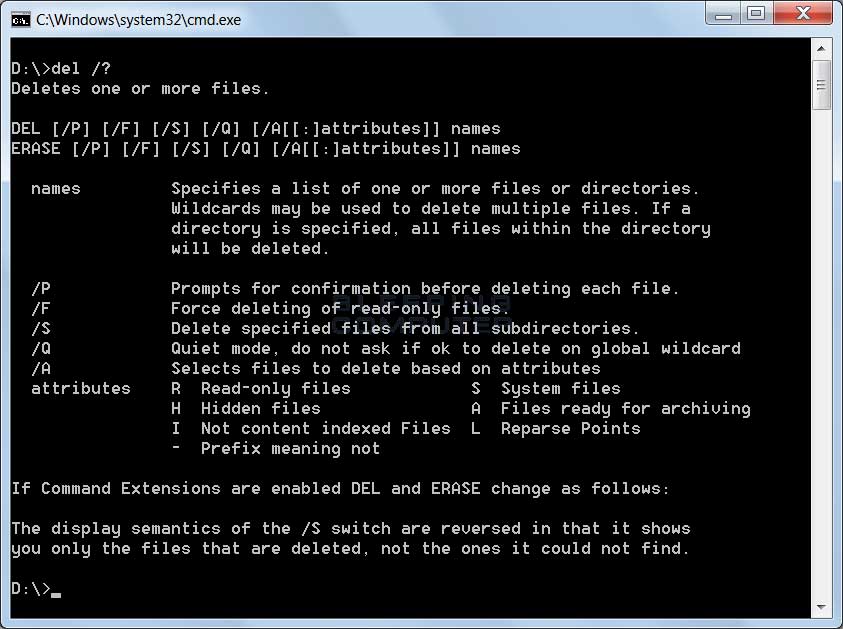
This command looks processes files in subfolders also, ‘/S’ can be removed to perform this only for the files in the current folder.

The command for this would be as below forfiles /S /D -3 /C "cmd /c move D \archiveDir" Let’s say we want to move the files which are not modified 3 days ago to another folder(D:\archiveDir). The syntax of the command is forfiles /D date /C "cmd /c command 4: Move files to another folder based on modification time This can be used to run commands on the files set returned by the command. To find files modified before 20th August 2013: forfiles /P directory /S /D - Execute commands on the files selectedįorfiles has an equivalent functionality similar to -exec option with linux find command. To find files modified after 1st August 2013, we can run the below command forfiles /P directory /S /D + Find files that were last modified 1 month back forfiles /P directory /S /D -30 3. D:\>forfiles /S /D -3ĮRROR: No files found with the specified search criteria. If there are no files meeting the condition, the command prints the following message. This option says to search for the files modified after n days from today’s date. Please note that /D +(number of days) is practically not useful. Specifying /S makes it search for such files recursively in all subfolders. Similar PowerShell cmdlet, finds the first copy only: ( get-command robocopy.exe).This command search for files created in the folder(specified with /P) in the last 7 days.
#Command line find file full#
TYPE - Display the contents of a text file.Įquivalent bash command (Linux): which - Show full path of commands. Which - several scripts from Rob Vanderwoude.ĪTTRIB - Display or change file attributes, with just the parameter specifying a file or a wildcard, ATTRIB will return similar results to WHERE.

OldNewthing - Describes this 90 byte 'whereis' batch %%e in (%PATHEXT%) do %%i in (%1%%e) do NOT "%%~$PATH:i"="" echo %%~$PATH:i Which.cmd - Show full path to executable. “Who never walks, save where he sees men's tracks, makes no discoveries” ~ Josiah Gilbert Holland In PowerShell, find all copies of robocopy.exe in the current system path:

CSV files on both the work and play folders: exe' otherwise the Where-Object cmdlet will take precedence.įind all files named 'Zappa' on the remote computer 'Server64' searching To run the WHERE command from PowerShell it is necessary to specify the. To avoid this behaviour, clear the PATHEXT variable temporarily with Set "PATHEXT=" For instance, the command WHERE monday.csv will list the file monday.csv in the current directory, as expected, but this will also list files like, should they exist. This PATHEXT expansion applies even if you are not searching for an executable. WHERE will use the PATHEXT variable to include all executable files, so WHERE robocopy will find the location of robocopy. The WHERE command is particularly useful to reveal multiple versions of the same comand/script/utility on the system PATH. Unlike the DIR command WHERE always returns the full path to each file found. The WHERE command can either perform a recursive search within one directory ( /R) or search through a list of folders ( Path Path:), but not both.īy default, WHERE searches the current directory and the paths specified in the PATH environment variable. Path One or more semicolon-separated paths to search. The pattern can also be $ ENV: Pattern where ENV is an existing environment variable
:max_bytes(150000):strip_icc()/002_uses-of-linux-command-find-2201100-5bd8f0d64cedfd00264fc4e5.jpg)
You can use wildcard characters ( ? * ) and UNC paths. Pattern The Drive\Directory\file, or set of files to be found. T Display the size, time stamp, and date stamp of the file. F Display the output file name in quotation marks.
#Command line find file code#
Q Don’t display the files but return either an exit code of 0 for success R A recursive search, starting with the specified Dir directory. By default, the search is done in the current directory and in the PATH. The WHERE command is roughly equivalent to the UNIX 'which' command. Locate and display files in a directory tree.


 0 kommentar(er)
0 kommentar(er)
